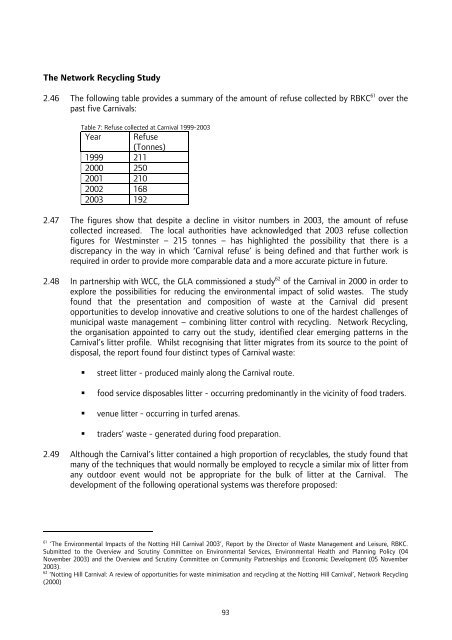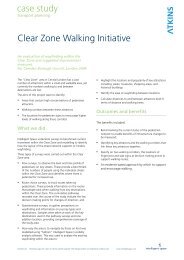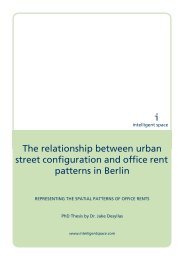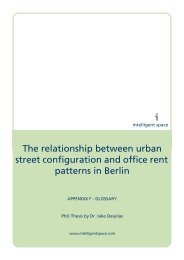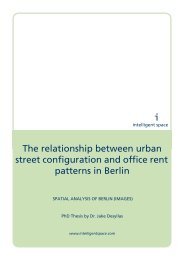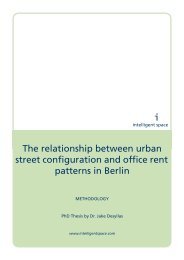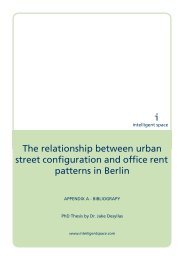Notting Hill Carnival Strategic Review - Intelligent Space
Notting Hill Carnival Strategic Review - Intelligent Space
Notting Hill Carnival Strategic Review - Intelligent Space
You also want an ePaper? Increase the reach of your titles
YUMPU automatically turns print PDFs into web optimized ePapers that Google loves.
The Network Recycling Study<br />
2.46 The following table provides a summary of the amount of refuse collected by RBKC 61 over the<br />
past five <strong>Carnival</strong>s:<br />
Table 7: Refuse collected at <strong>Carnival</strong> 1999-2003<br />
Year Refuse<br />
(Tonnes)<br />
1999 211<br />
2000 250<br />
2001 210<br />
2002 168<br />
2003 192<br />
2.47 The figures show that despite a decline in visitor numbers in 2003, the amount of refuse<br />
collected increased. The local authorities have acknowledged that 2003 refuse collection<br />
figures for Westminster – 215 tonnes – has highlighted the possibility that there is a<br />
discrepancy in the way in which ‘<strong>Carnival</strong> refuse’ is being defined and that further work is<br />
required in order to provide more comparable data and a more accurate picture in future.<br />
2.48 In partnership with WCC, the GLA commissioned a study 62 of the <strong>Carnival</strong> in 2000 in order to<br />
explore the possibilities for reducing the environmental impact of solid wastes. The study<br />
found that the presentation and composition of waste at the <strong>Carnival</strong> did present<br />
opportunities to develop innovative and creative solutions to one of the hardest challenges of<br />
municipal waste management – combining litter control with recycling. Network Recycling,<br />
the organisation appointed to carry out the study, identified clear emerging patterns in the<br />
<strong>Carnival</strong>’s litter profile. Whilst recognising that litter migrates from its source to the point of<br />
disposal, the report found four distinct types of <strong>Carnival</strong> waste:<br />
• street litter - produced mainly along the <strong>Carnival</strong> route.<br />
• food service disposables litter - occurring predominantly in the vicinity of food traders.<br />
• venue litter - occurring in turfed arenas.<br />
• traders’ waste - generated during food preparation.<br />
2.49 Although the <strong>Carnival</strong>’s litter contained a high proportion of recyclables, the study found that<br />
many of the techniques that would normally be employed to recycle a similar mix of litter from<br />
any outdoor event would not be appropriate for the bulk of litter at the <strong>Carnival</strong>. The<br />
development of the following operational systems was therefore proposed:<br />
61<br />
‘The Environmental Impacts of the <strong>Notting</strong> <strong>Hill</strong> <strong>Carnival</strong> 2003’, Report by the Director of Waste Management and Leisure, RBKC.<br />
Submitted to the Overview and Scrutiny Committee on Environmental Services, Environmental Health and Planning Policy (04<br />
November 2003) and the Overview and Scrutiny Committee on Community Partnerships and Economic Development (05 November<br />
2003).<br />
62<br />
‘<strong>Notting</strong> <strong>Hill</strong> <strong>Carnival</strong>: A review of opportunities for waste minimisation and recycling at the <strong>Notting</strong> <strong>Hill</strong> <strong>Carnival</strong>’, Network Recycling<br />
(2000)<br />
93


